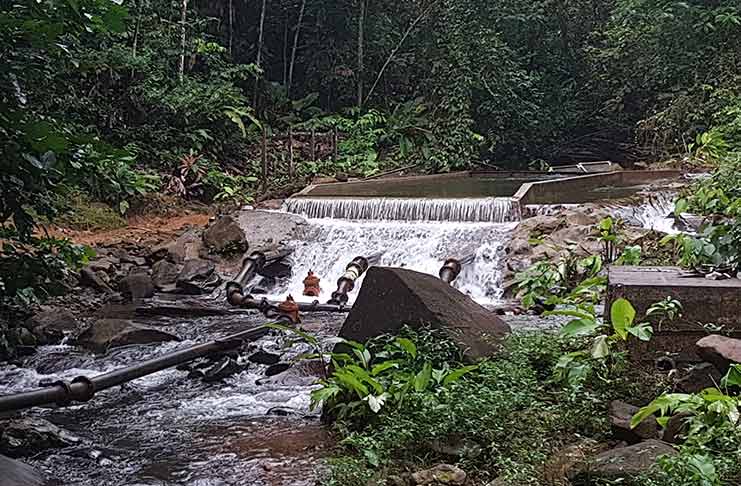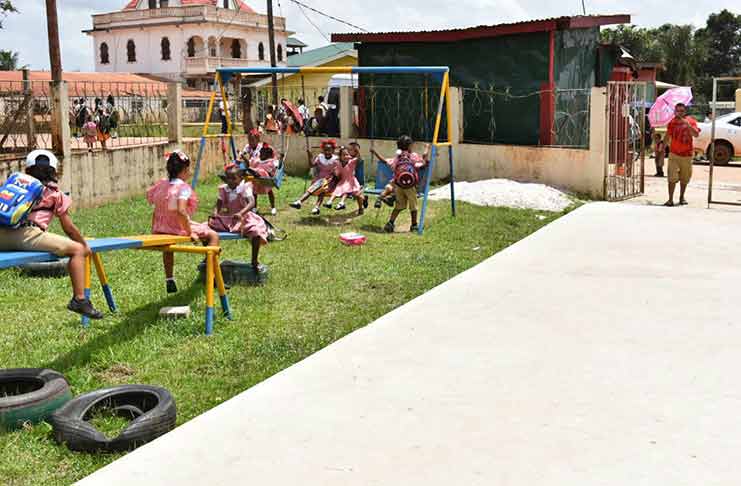The blossoming community of Mahdia
By Ravena Gildharie
AS Guyanese would put it, “it is a place that does get bright when it gets dark.” A great deal of irony, but nothing short of a description for Mahdia, one of Guyana’s oldest mining hubs, and yet still so reputable for its buoyant nightlife and iconic fascinations to passing gold and diamond miners. Desolate streets at daytime bounce alive at nightfall, as the seven popular nightspots blast the latest and most popular tunes, and its earliest patrons emerge to spend time at the most luring of attractions.

Beyond this energetic social ambience, however, lies a community in transition; one that is ripe for modernity; slowing rising to shake off the lawless labels often bestowed on such mining hubs. Undeniably, much progress has been made and more remains in train as Mahdia gears up for township status. But what does being a municipality mean to the people who call Mahdia home?
And is the community ready to own its stake as a town?
Certainly so, says Roger Hinds, one of Mahdia’s most prominent and influential businessmen who holds the community closest to heart. “For us, Mahdia is ready for township, like yesterday…Township status will mainly provide Mahdia with economic growth and the unity required to collectively build capital assets such as a bank, housing schemes and industrial parks, agricultural farms and expand our tourism potential.”

While this vision is shared among most residents, Hinds has been on his own quest to transform Mahdia, as his name is synonymous with many of the latest developments and business ventures that have boosted the community beyond that of a usual mining hub. These include a modern hotel and supermarket. At the latter, shelves are well stocked with any and everything including a section that supplies fresh agricultural produce right out of Hinds’ farm.
“I am willing, along with many others here in Mahdia to work in unity with the President’s vision for the township of Mahdia,” Hinds asserted, noting that since the community is situated at the centre of Guyana, it can become the administrative nucleus for government. Hinds is cognisant that Mahdia has made great strides over time, especially in areas of infrastructure, communications and basic services such as water and electricity.

INFRASTRUCTURAL BOOST
At present, the massive construction of concrete roads and drains is underway in Mahdia as part of a $1.5 billion 2018 subvention for the upgrade of hinterland roads in Regions One, Eight, Seven, Nine and 10. Works have also started on the rehabilitation of the road linkage between Bartica and Mahdia.
The upgrade is being done in phases, the first includes works from Mile 19 to Mile 33, Mile 78 to Cassandra Crossing along the Bartica/Potaro road and Mahdia to Denham, which was reported as completed last May. This year’s projected works on phase two comprise work from Mile 33 to Mile 68 along the Bartica/Potaro road. The third and final phase will begin in 2019 and will see the rehabilitation of the Denham Bridge, construction of a Cassandra Crossing bridge and road works from Cassandra Crossing to Denham.

These infrastructural upgrades complement Mahdia’s township development drive, even as consultation has been ongoing with residents including in the nearby indigenous villages of Campbelltown and Princeville.
“I find that over the course of time, the provision of essential services is becoming much more steady, stable and reliable in Mahdia,” Hinds indicated. He noted that “regular advancements such as the upcoming Solar PV Farm, will ensure that Mahdia as a town can attract the many other industries and economic ventures.”
Against this background, the businessman is confident that “with hard work, this will quickly lead to Mahdia becoming a vibrant commercial hub.”

SOCIAL SERVICES
Already the thrust for township status has been a source of motivation for local businesses and even new investors who are increasingly capitalising on economic opportunities in Mahdia. Existing businesses have been rushing to upgrade their facilities and services. This enthusiasm has led to the expansion and upgrade of restaurants, hotels and retail outlets.
Just recently, the community officially launched the Mahdia Chamber of Commerce which is working on its own path of commercial growth in a unified and guided approach involving the most active investors in the area. The popular Adams’ family-owned restaurant, for instance, is opened 24-hours offering hot meals and other delicacies fresh off the stove. Currently, the business is expanding to meet growing customers’ demand.

According to Shauneille Jourdain, headteacher of the Mahdia Secondary School, the gear for township is also shoving residents to make necessary adjustments to further advance their community. She noted that residents are eager to clear their community from the age-old stigma associated with mining hubs, where coastlanders often postulate with rampant vulgarity and lawlessness driven by strip clubs and prostitution rings.
“We the people living here are working to change that label, because often when you meet someone they say ‘oh you are from Mahdia, the place where you have lots of ‘bad woman’ around.’ We don’t want people to keep thinking of Mahdia as ‘the bush’,” Jourdain told this publication in an interview. She was born in Mahdia and has been a teacher for over 20 years.
During this time, she witnessed first-hand the progress in Mahdia’s education sector. Since the Mahdia Secondary School was opened in 2002, it has been producing a high calibre of students, emerging with as much as seven passes in one sitting at the Caribbean Secondary Education Certificate (CSEC) Examination.
The school currently has an enrollment of 356 students and 11 teachers on staff, while two are on upgrading courses at the University of Guyana and Cyril Potter’s College of Education (CPE) in Region Four. Just recently the school was boosted with the addition of a trained mathematics teacher.
Notably, Jourdain proudly observed that many of the emerging students, after advancing their education, have been returning to take up employment posts in their community as nurses, lab technicians, teachers and employees in the Regional Democratic Council (RDC).
Further, just last April, the Department of Education official unveiled a three-year teachers training programme in Mahdia targeting early childhood and primary level teachers.
Jourdain is the coordinator of that programme and also lectures to the teachers.
Outside of education, Jourdain acknowledged the many other developments registered in Mahdia, such as the provision of potable water and electricity. She noted that before the Mahdia Power and Light Company, residents were forced to purchase electricity from private suppliers at expensive costs. Only a few residents could have afforded such. Now, all residents of Mahdia enjoy several hours of electricity provided at a subsided cost and at a scheduled time from 12:00hrs to 08:00hrs.
Potable water supply is also reliable from the Salbora Reservoir. Jourdain recalled earlier days when residents had to purchase water at a cost of about $6,000 per black tank.
The teacher also highlighted the introduction of Radio Mahdia another boost for the community while noting the provision of mobile services from both GTT and Digicel.
Looking ahead, Jourdain said residents are eager that more will be done as Mahdia becomes a town, a place where residents will have more added services and will no longer have to leave their community to travel to Georgetown and elsewhere, to access basics amenities. A commercial bank is one of the first developments Mahdia is hoping for, as well as decentralisation of registry services such as application and issuance of passports, birth certificates and other licences.
For now, residents of Mahdia are all joining hands and efforts and rallying with central and local government to make their home one of the best towns ever.



.jpg)








